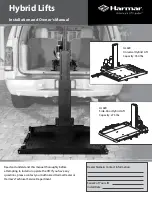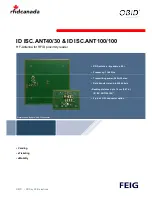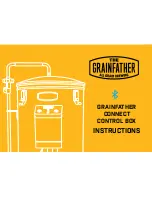
33
9. You are now going to force the clarification agent into the
vessel. It is critical to be able to hear the clarification
process in order to be sure it has occurred, so turn off all
external noise like any music players, the radio etc.
Open the black 3-way valve to the pot for 10 seconds only,
by turning the 3-way valve anti-clockwise from its closed
(X) position to be in-line with the arrow pointing to the
clarification pot (see Figure 49). Allow the clarification
agent to bubble and mix into the vessel for 10 seconds.
The bubbling sound should be audible and must be vigorous
enough to imply a good mixing of the clarification agent
with the beverage. The mixing can also be seen through the
vessel lid sight-glass with the help of the vessel light.
10. After 10 seconds of bubbling, close the 3-way valve
(X position). If clarification is done properly, the pressure
of the vessel should increase by about 0.25 bar or slightly
more. So for first time users, the pressure in the vessel
should be about 1 bar or just above it.
11. You now need to rinse the clarification pot. Open the pot
lid and use the 500ml wash bottle to rinse water down the
sides of the pot wall (see Figure 50). Fill to the level that
the CO
2
line enters the pot and then close the lid on the
pot again.
12. The pressure on the vessel should still be lower than the gas
cylinder pressure, so turn the 3-way valve back to the arrow
pointing to the clarification pot and bubble the rinse water
through the lines and into the vessel for a few seconds.
Mixing is not required as this step is just to rinse the
clarification pot and its lines of any clarification agent.
If you do not hear the water bubble into the vessel, you may
have increased the pressure in the vessel too much during
step 9 by bubbling too long. You may then need to close
the 3-way valve again (x) and release some pressure from
the tank again as you did in step 8, to create a pressure
differential and then repeat step 12.
13. Then turn the 3-way valve clockwise to the arrow pointing
to the tank pressure gauge so that the gas cylinder pressure
(1.25 bar for first time users) will now hold pressure in the
tank at your set-point for beverage dispense.
14. Then go back to the sediment bottle which you attached
to the vessel valve. Some of the foam will have collapsed
and formed beer but there will still be no air in this bottle.
Check you attached it securely and solidly hand-tight and
then open the vessel valve quickly. (see Figure 51). This will
allow beverage to enter the sediment bottle from the tank
and the CO
2
from the foam in the sediment bottle will shoot
up into the tank and create another final mixing effect in
the tank to aid the clarification process. Once the beverage
has filled the sediment bottle, check you have put it on
tight enough and it is not leaking. Leave the vessel valve
fully open so that the sediment bottle is open to the vessel
again, but the clarification agent and yeast and other haze
materials can now fall into the sediment bottle over the next
24 hours.
For beer, yeast and haze protein will now have reacted with
the clarification agent and you will be able to see some
particles falling into the sediment bottle.
After 24 hours the sediment bottle should be about ½ to ¾
Fig. 52
Fig. 51
Содержание BrewMaster
Страница 3: ...PART ONE YOUR PERSONAL BREWERY...
Страница 14: ...PART TWO MAKING YOUR BEVERAGE WITH THE STANDARD BREWING METHOD...
Страница 39: ...PART THREE MAKING BEVERAGES WITH THE ADVANCED METHOD...
Страница 45: ...PART FOUR APPENDICES...
Страница 78: ...TROUBLE SHOOTING THE WILLIAMSWARN PERSONAL BREWERY...
















































